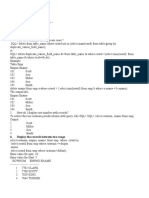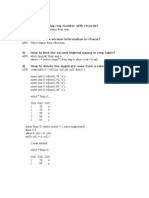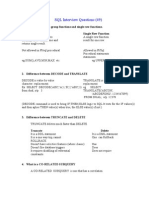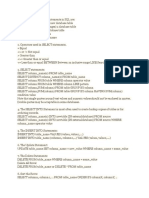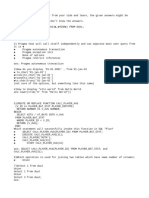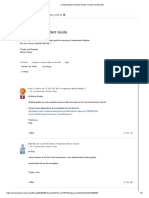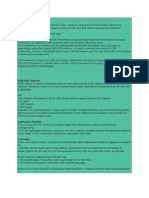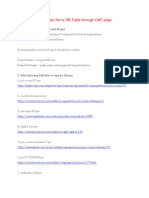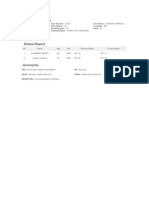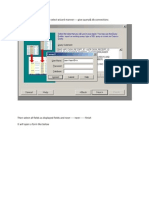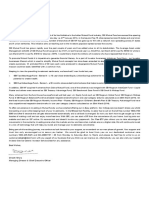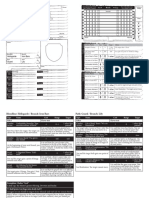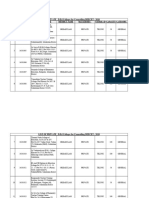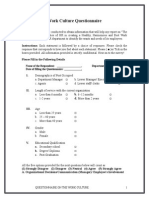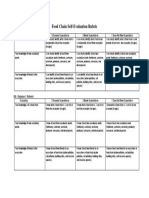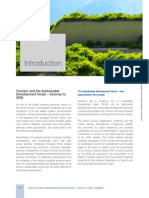0% found this document useful (0 votes)
211 views9 pagesOracle Sample - Practice Queries
1. The SQL statements show methods to select or delete rows from a table based on row position or duplication. Methods include selecting odd/even rows, the nth row, last nth rows, first nth rows, and deleting duplicate rows based on certain criteria.
2. Pseudo-columns like ROWNUM and functions like DECODE, MOD, COUNT, MIN are used to determine row position and criteria for selection or deletion.
3. SQL queries, MINUS operators and sub-queries are employed to selectively fetch or remove rows from tables.
Uploaded by
kullayappa786Copyright
© © All Rights Reserved
We take content rights seriously. If you suspect this is your content, claim it here.
Available Formats
Download as TXT, PDF, TXT or read online on Scribd
0% found this document useful (0 votes)
211 views9 pagesOracle Sample - Practice Queries
1. The SQL statements show methods to select or delete rows from a table based on row position or duplication. Methods include selecting odd/even rows, the nth row, last nth rows, first nth rows, and deleting duplicate rows based on certain criteria.
2. Pseudo-columns like ROWNUM and functions like DECODE, MOD, COUNT, MIN are used to determine row position and criteria for selection or deletion.
3. SQL queries, MINUS operators and sub-queries are employed to selectively fetch or remove rows from tables.
Uploaded by
kullayappa786Copyright
© © All Rights Reserved
We take content rights seriously. If you suspect this is your content, claim it here.
Available Formats
Download as TXT, PDF, TXT or read online on Scribd
/ 9

